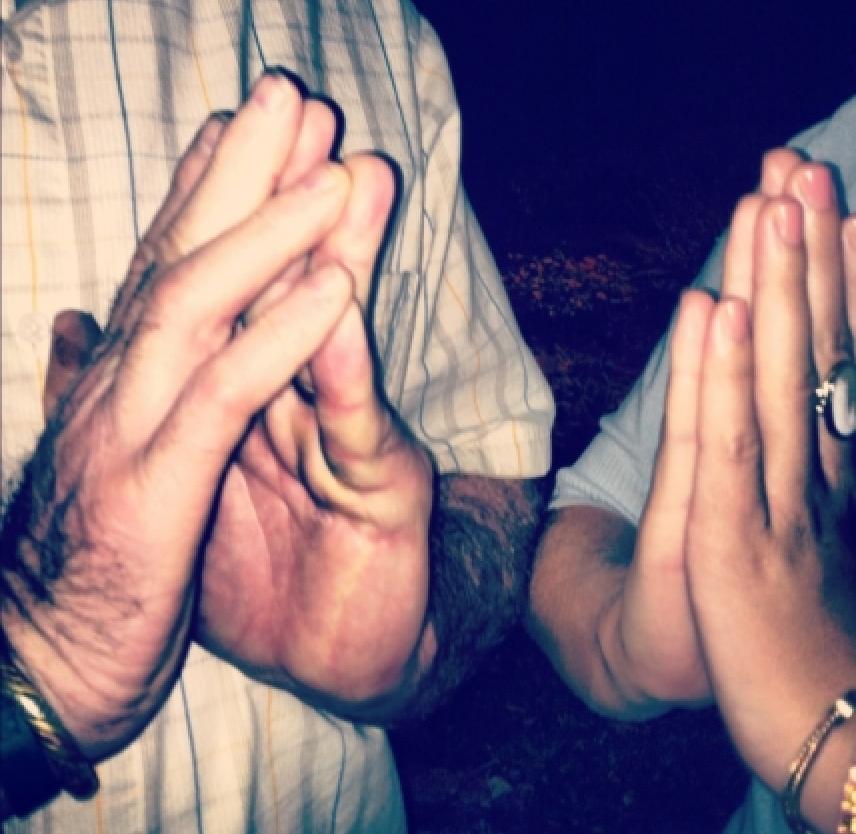
We walk, scurry, plan, type, talk, run, perform, execute, and breathe through our days. We move fast, and rarely do we pause and think about how these actions define us, how we define ourselves. We move through time and space with little to stop us.
“Stand at the top of your mat with big toes touching, heels slightly apart — or whatever your Tadasana (Mountain Pose) is today.” I’m a yoga teacher and I give those instructions to my students almost every class. “Close your eyes. Press your palms together at your heart. Feel the weight in your … ” Stopped in this stillness, the awareness of the body in space begins to take shape.
Trauma, on the other hand, is the involuntary, unwanted, stop. Sometimes the stop lasts a day, a week, an afternoon. The bigger the trauma, the longer the stop lasts. Sometimes the stops morphs into a big ol’ gap where the mind and the body have seemingly agreed to disconnect, because how else could our little human existence handle the events?
Frustrating as it may be, it makes perfect sense that my father remembers nothing about his car accident. He can’t. We’ve tried. He’s tried, a little. It’s like your first birthday party — do you really remember it? Most likely not, you just know it happened, because people have told you or there are pictures; however, these are not memories you can truly claim. Yet that first hard-to-access first birthday is the consequence of a young brain, not a battered one.
My dad’s traumatic brain injury has left him with a ginormous gap — months and months gone with holes left in so many of his years. One minute, his life was waterskiing, time with his racquetball buddies, selling cars, and a lovely life shared with his wife and daughter. The next it was his wife and daughter begging him to be the man he used to be as they steered him around in a wheelchair with everyone in sight reminding him how badly his brain was broken. My father didn’t have a clue what man we were talking about. As far as he was concerned, he was here and now. He was him.
Loss of purpose, a lackluster sense of identity, a lack of motivation are some very severe and certain symptoms of a trauma the size of a traumatic brain injury. Forget where or how you got hit on the head, anyone who survives that kind of trauma is bound to struggle with who you are now. Others can explain — family members, doctors, specialists — and you can guess you had a brain injury, if that’s what all this fuss is about. It becomes an identity conundrum: you think and feel you are one person, yet the world sees you as another.
So how do we reconnect the mind and body? How do we find ourselves in the now?
Tadasanais a good start. No matter what person you are, no matter what your trouble or your trauma, you can come to stand on your mat in Mountain Pose. This pose has an illusive discipline that comes easily to some, and for others it’s a challenge. All the chakra centers have the chance to align, from the heels to the crown of the head. Inhales and exhales string together and the body becomes aware of the breath, the balance. Eyes close and the body might sway, maybe even topple, or perhaps you stand as strong as an oak. Tadasana is a good place to notice who you are and where things might just feel off.
We identify — or re-identify — through points of awareness. At first, teaching my dad Tadasana was a hot mess. He and I both became supremely aware that the man on the mat in the summer of 2012 was not the man either one of us thought he’d be. He came ready to conquer this, get it over with, as yoga was just the next, newest element to the TBI routine of his life. And I came ready to resist his apathy, to work through things like we always do, to make sure he does them right.
But this man became vulnerable. Standing in stillness was astoundingly laborious, yet he was aware of this and receptive to the discomfort. Unlike so many of his routines and treatments — those designed to identify the deficits of his brain, those designed to help him manage them — this first yoga pose was finally able to show his brain how his body was different.
Tadasana was the first step for father and daughter to begin to peel back the layers and identify the man after the accident.
The pose begs the question: How easy is it to stand when we can’t identify with who we are?

Comments (2)
Please remember, we are not able to give medical or legal advice. If you have medical concerns, please consult your doctor. All posted comments are the views and opinions of the poster only.
Anonymous replied on Permalink
Anonymous replied on Permalink